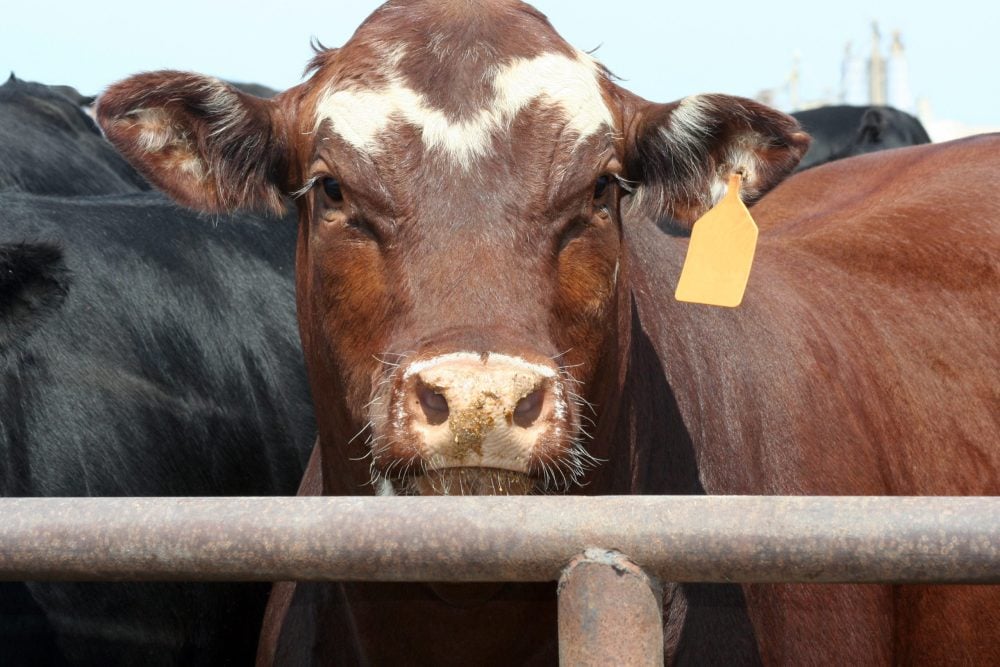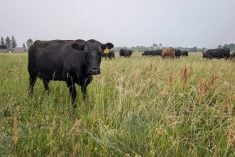An Alberta judge recommends the province lift the exemption that excludes farms’ paid workers from provincial workplace safety regulations.
Provincial Court Judge Peter Barley included that recommendation among several in his fatality inquiry into the June 2006 death of High River-area farm worker Kevan Chandler.
Chandler, 35, died while trying to clear hung-up grain inside a silo at Tongue Creek Feeders. Barley’s report from the inquiry into Chandler’s death was submitted last month to provincial Attorney General Alison Redford and released Tuesday.
Barley, in his recommendations, reiterated that no one should enter a silo beneath the top level of the grain inside, unless the grain is resting at an angle of less than 45°.
Read Also

U.S. livestock: Cattle futures plunge daily limits on beef price fears
Reuters — Most Chicago Mercantile Exchange live cattle and feeder cattle futures contracts fell their respective daily limits on Friday,…
“There must always be at least one person outside the silo when another person is inside cleaning,” Barley wrote. “This allows them to watch for signs of trouble, signal for assistance if needed, and start immediate attempts at rescue.”
In Chandler’s case, the inquiry heard in October, he and a co-worker had been trying to remove grain stuck to the walls of a silo. The co-worker left briefly to get a longer pole for Chandler, who was inside the silo, and returned to find the grain had fallen in, smothering Chandler.
“It is grain that is hanging from the walls, sloped at an angle that is greater than 45° that is dangerous,” Barley wrote. “Grain at a lower angle is apparently stable enough to walk on, so the height of it should not be an issue.”
Chandler, Barley noted, had “expressed concern on the morning of June 18 as to the danger in clearing out silo 7. However, Mr. Chandler was known to be eager to please, and confident in his abilities, and the opinion of the co-workers was that Mr. Chandler made an error in judgment, caused by enthusiasm and lack of experience.”
Barley also recommended that written hazard assessment forms should be prepared for use each time an activity known to be dangerous is undertaken by an employee on a farm. “The results of the undertaking should be recorded and kept available for review,” he wrote.
Should be covered
But Barley also recommended that “paid employees on farms should be covered by the Occupational Health and Safety Act… with the same exemption for family members and other non-paid workers that apply to non-farm employers.”
Barley said an entity like the provincial employment and immigration department, if it investigated farm worker deaths to the same extent that it investigates non-farm employment deaths, would “obviously have far greater ability to make meaningful recommendations to improve workplace safety on the farm than any entity hearing the facts of a single fatality.”
If the workplace safety and health standards for paid farm work were recommended by a committee that included farmers, then the “collective experience and knowledge could be set out in a manner that could be accessed by everyone with an interest in the activity.”
In short, he wrote, “this would allow employers to know what standards would make their workplace safe, and to insist that their employees meet that standard.”
Barley said his inquiry heard “many farms are family-run operations, part home and part workplace. Since a non-farmer working at home is not covered by the Occupational Health and Safety Act, it was felt by many farmers that they should be exempt for the same reason.”
That said, Barley added, “no logical explanation was given as to why paid employees on a farm are not covered by the same workplace legislation as non-farm employees.”
Furthermore, Barley wrote, Alberta Agriculture and Rural Development should also set up training programs to “address ways to minimize the risk of hazardous activities, with a system to record training received by both employers and employees.”
Right now there are just three provincial ag department employees involved in educating 50,000 Alberta farmers, Barley wrote, “whereas there are 84 Occupational Health and Safety inspectors from the Alberta Department of Employment and Immigration monitoring 140,000 non-farm employers.”















